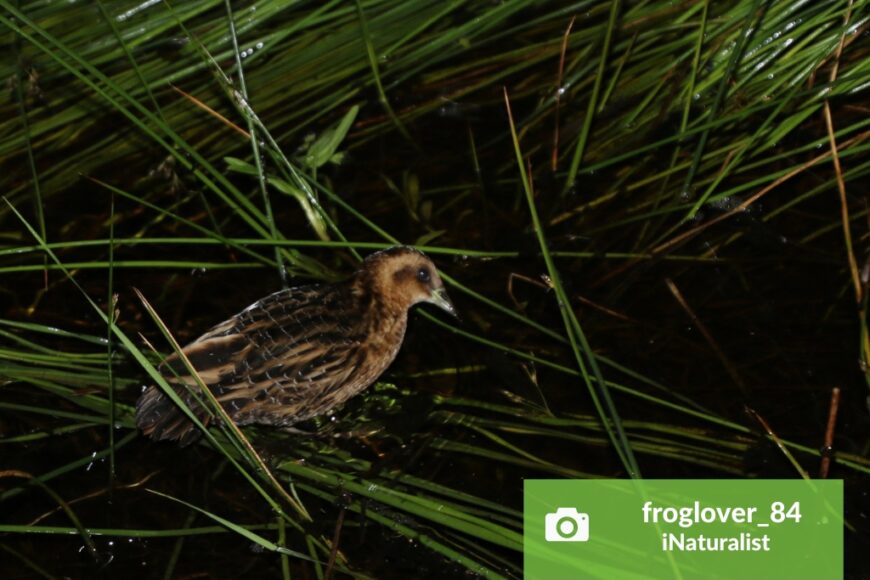Dawson Trail Dispatch, written by Norm Gregoire, January 2024
Page 8 https://issuu.com/dispatch222/docs/dawson_trail_dispatch_january_2024
Something that I appreciate more every day that I spend time in the tall-grass prairie natural area is the diversity of wildlife that we share the landscape with. We can sometimes grow accustomed to some of the wildlife that we see day to day, but every once in awhile we come across something that we haven’t seen before or even know lives here.
When I talk to community members about the yellow rail, almost all say that they had no idea that this species existed. There are a few reasons for this lack of knowledge on yellow rail, including being more active at night, rarely flushing during daylight hours, great camouflage, and living in a really hard-to-reach habitat.
Yellow rail are very seldom seen; more often, they are heard making a distinct “click-click” call that sounds as if two small stones are being tapped together. The yellow rail is comparable in size to a robin, with mottled, yellow, and brown plumage. The underparts and face are lighter yellow, and the stubby bill is a more noticeable yellow in breeding males. Yellow rail have a shape similar to that of a chicken, with proportionately long legs and a short head and neck.
Yellow rail live in shallow wetland habitats such as wet grasslands and sedge meadows. Changes to hydrology, such as draining of wetlands or damming, have big impacts on yellow rail as they do not tolerate higher water levels.
Yellow rail rely on wetlands for both feeding and nesting. They will be feeding on invertebrates such as aquatic insects and snails. They will also eat seeds from various marsh plants. The nest is usually built in raised areas just on the outskirts or even in the wetland habitat. Both sexes help to build a small ground nest made up of various sedges and other marsh plant material. On average, six to ten eggs are laid, and when they hatch, the young leave the nest, usually within a day or two, and use a separate nest for brooding constructed by the parents. Short grasses, or sedges, are needed to camouflage from potential predators.
Being such a secretive species, the yellow rail is a hard bird to study. It is thought that they have a small breeding population throughout Canada and that populations are in decline due to many factors, a major one being habitat loss. Even though yellow rail may not be a species that we see on a regular basis, it is still important that we work towards keeping them from disappearing. By having a healthy wetland habitat for yellow rail, we in turn provide many benefits for ourselves, including having a natural pollution filtration system. This then provides better habitat for countless other species found in our area, which in turn gives back to the ecosystem in many different ways.
You may not have known that we live among species like the yellow rail, but going forward, I hope we can work towards sustaining the population we do have and, in turn, be good stewards for the place we all call home.
If you have any questions about yellow rail, please contact me at info@sharedlegacymb.ca.

